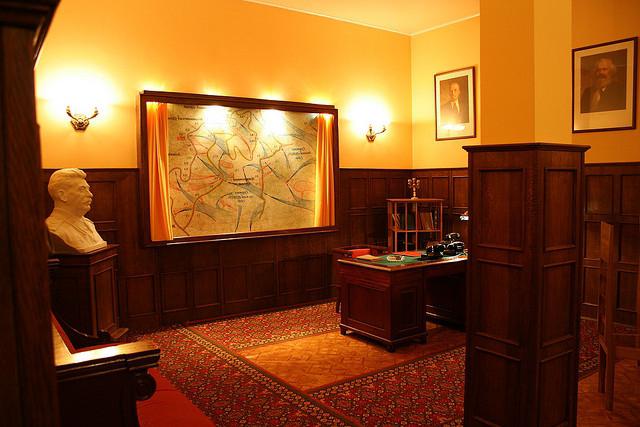The assertion of Stalin’s sole authority coincided with the emergence of a new architectural style known as the “Stalin Empire”. Many people know this style under such names as “Soviet monumental classicism” and “Stalinist architecture”. Stalin's empire occupied a leading position from the 30s to the 50s of the last century. After the end of World War II, Stalinist architecture spread to the countries of Eastern Europe. In the Stalinist Empire, the use of styles of various peoples and eras is noticeable, so I often compare it with eclecticism.
Stalin's Empire style in architecture
First of all, the Stalin Empire style was a state architectural style, therefore it is quite natural that the main propaganda ideas of the Stalin era are clearly expressed in it. For example, the idea of expecting future happiness is guessed in the bas-relief of the library. Lenin, which depicts a procession of people with gifts (wheat ears, corn and other symbols of abundance). Interestingly, similar compositions once existed in ancient Babylon.
The following distinctive features are characteristic of Stalinist architecture:
- ensemble development of squares and streets;
- synthesis of architecture with sculpture and painting;
- the use of elements characteristic of Russian classicism ;
- bas-reliefs with images of workers and heraldic compositions;
- use of architectural orders ;
- optimistic attitude.
One of the most famous buildings in the style of the Stalinist Empire style was the building of Moscow State University, located on the Lenin Hills. In the architecture of this building, precious stones are adjacent to papier-mâché and artificial marble. One cannot but recall such structures as the building of the Ministry of Foreign Affairs, the Leningradskaya Hotel, the Novokuznetskaya Metro Station, the Ukraina Hotel and a residential building located on Kudrinskaya Square. All of the listed buildings are architectural monuments of Moscow.
Stalin's Empire style in the interior
As for the interior design, here the main distinguishing feature of the Stalinist empire is the use of bronze, marble, stucco molding and precious woods. At the same time, the interior gives the impression of massiveness and strict quality factor.

Interior doors are glazed and painted white. The windows are decorated in dark brown, and the bathroom is laid out with monophonic ceramic tiles, which are sometimes decorated with a patterned border. Wooden wall decoration is welcome. The color scheme was more than restrained - such colors as black, green, brown and beige prevailed. Furniture, as a rule, is dark and bulky, designed in a strict, without any frills style. It is characterized by rounded forms, inlay with veneer, and in some cases carving. The latter illustrates the elements of Soviet symbolism: five-pointed stars, sheaves of ears and laurel wreaths. In Soviet times, carving was considered a special chic. It will look no less original in the modern interior, decided in the style of the Stalinist empire.